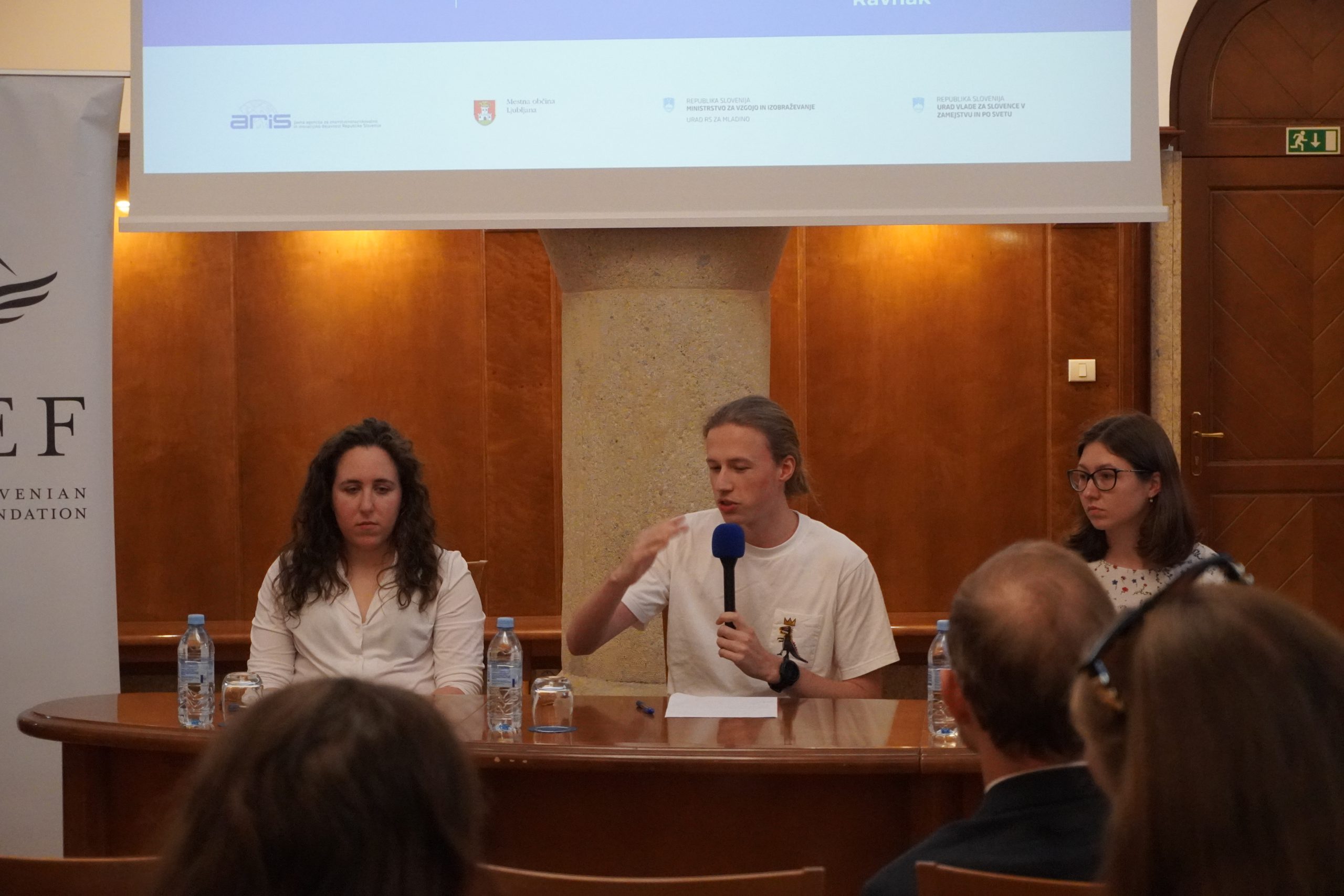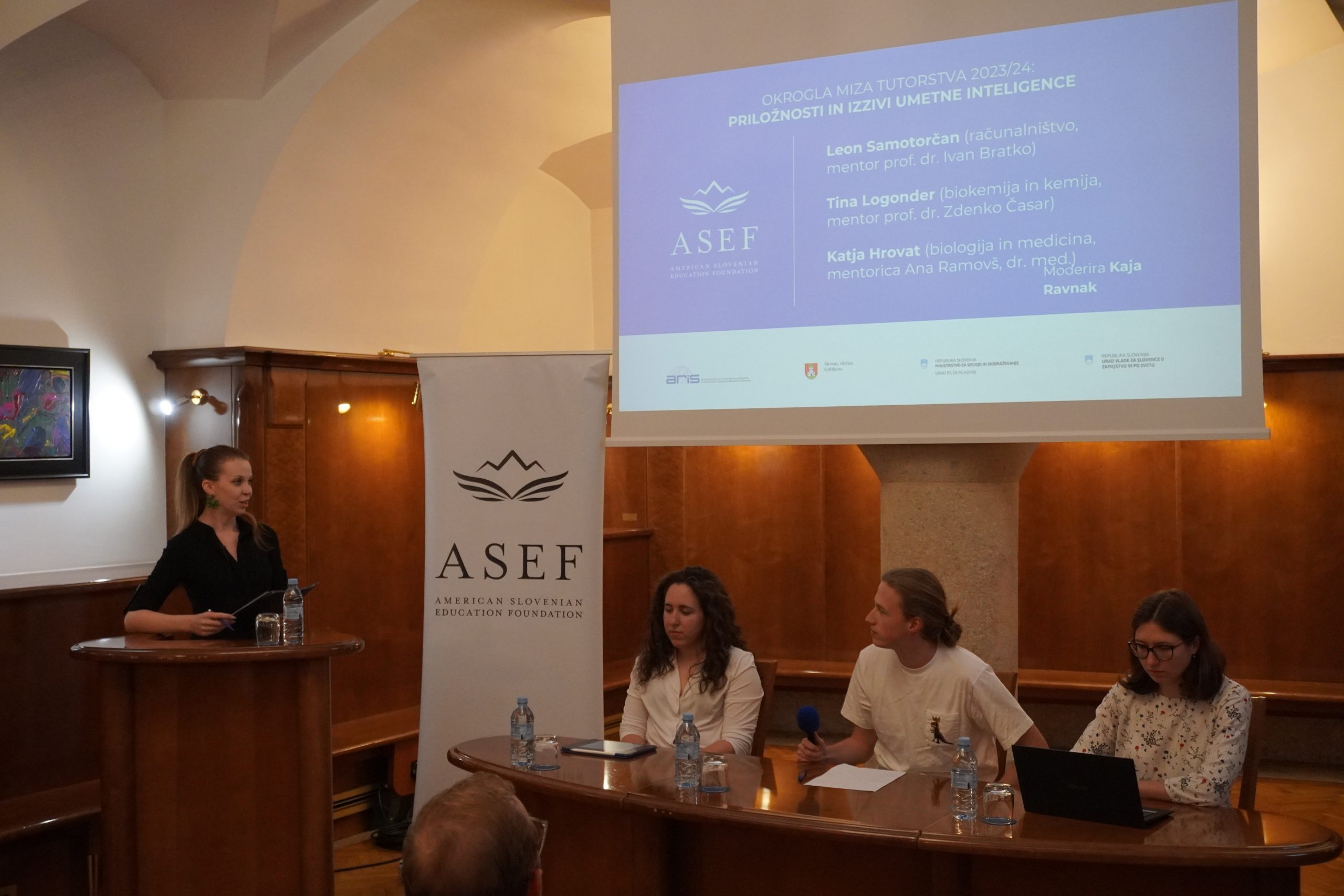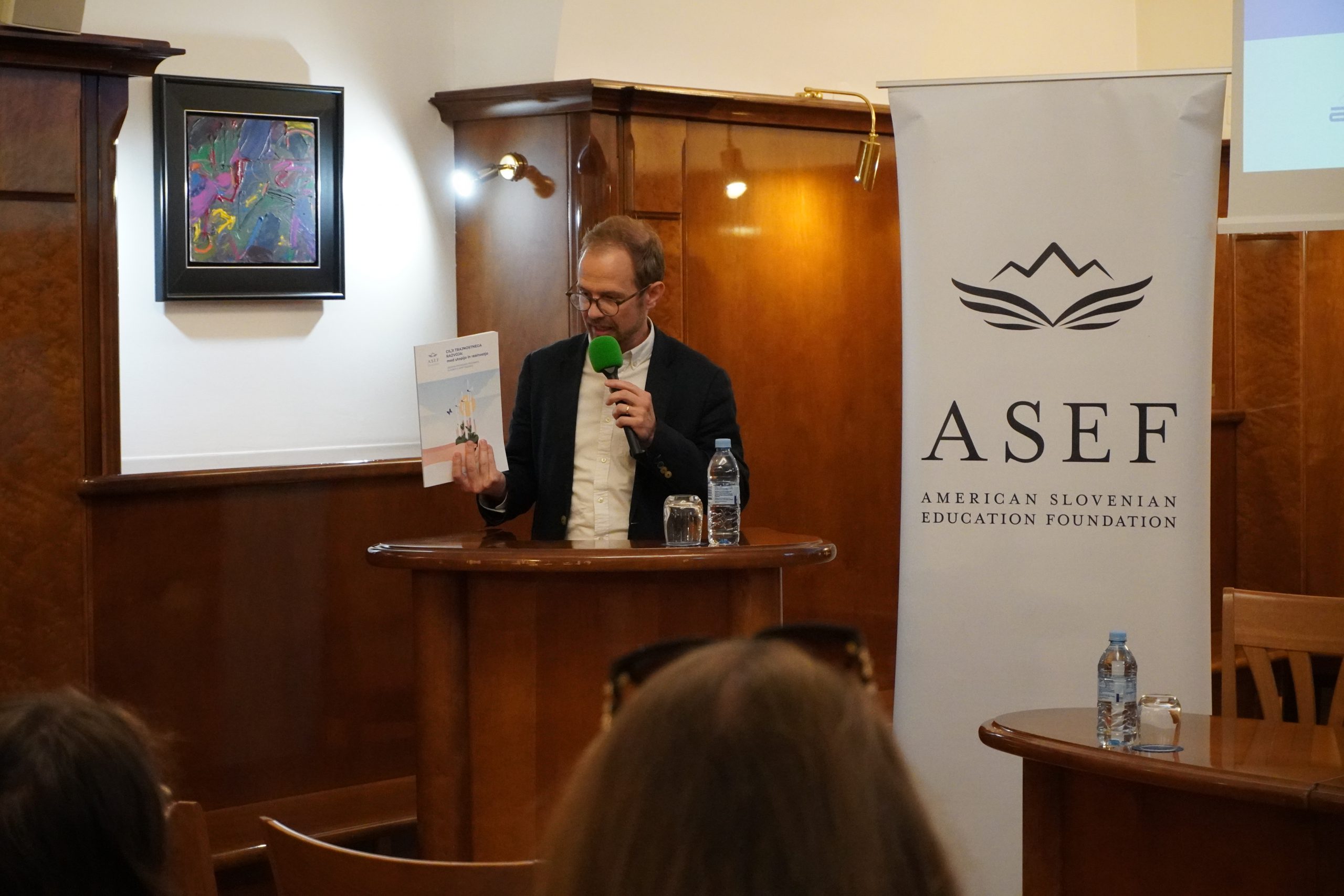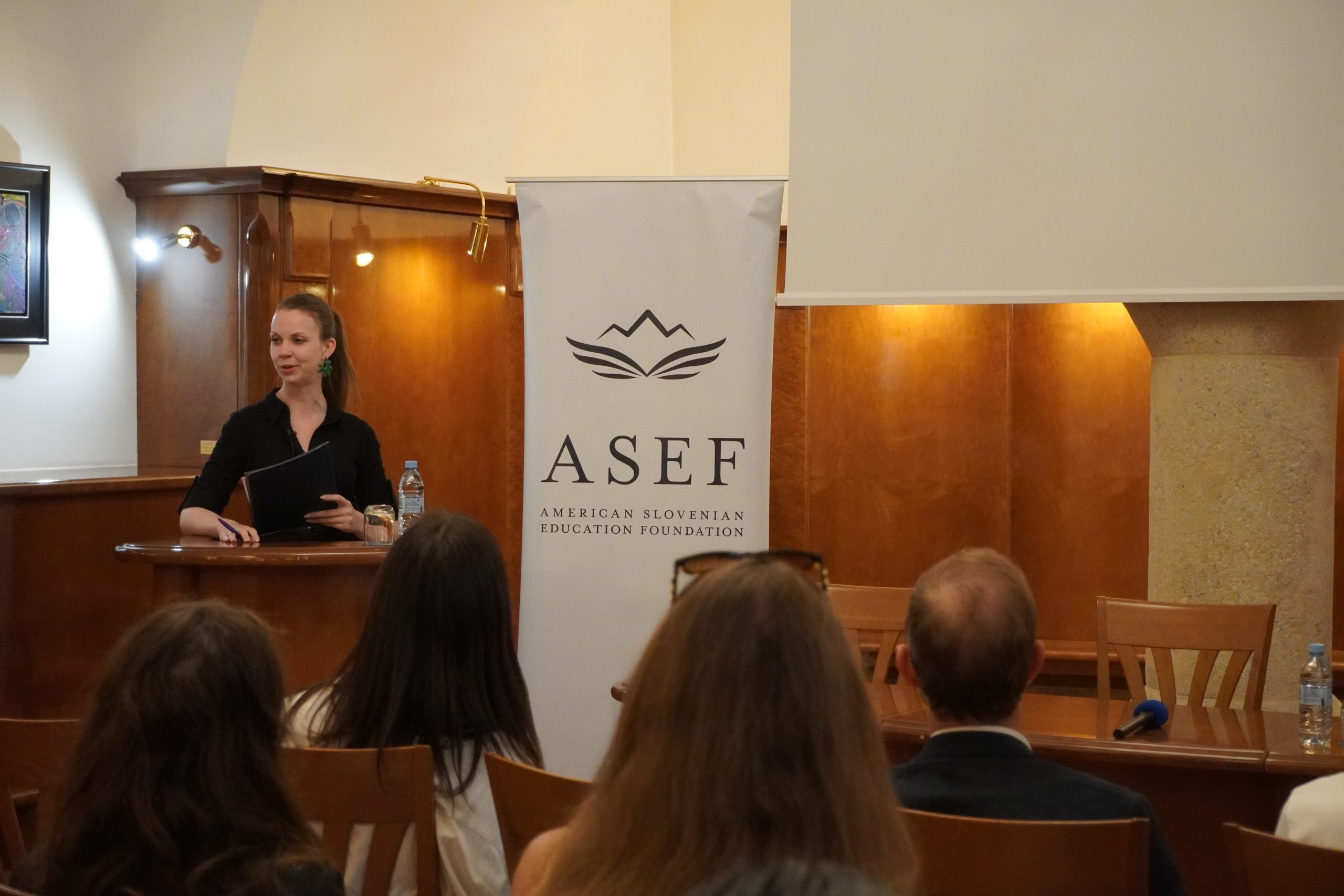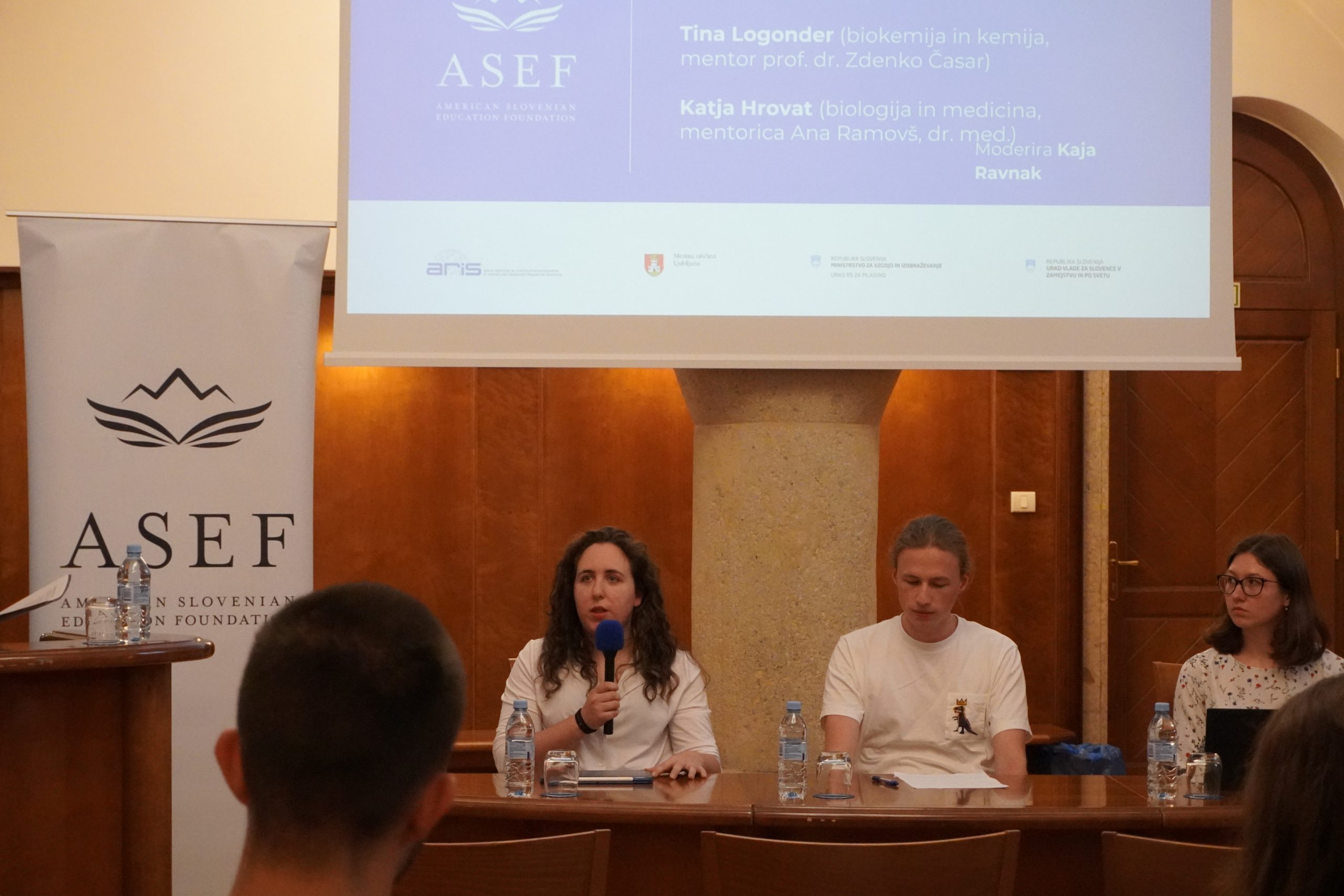
Second Roundtable: Opportunities and challenges of artificial intelligence
On Wednesday, May 29th, 2024, we held the second roundtable of the 2023/24 ASEF Tutorial program, entitled “Opportunities and challenges of artificial intelligence”. The hybrid event was moderated by Kaja Ravnak of Val 202.
The audience was first welcomed by Kaja Cunk, ASEF’s head of projects. She emphasized the importance of this roundtable, where the ASEF yearly publication of 2022/23 would be presented for the first time. Dr Rok Sekirnik, head of the ASEF Tutoring program, proceeded to present the new publication, which was published in record time, making its content all the more fresh and current.
Dr Sekirnik’s address was followed by a presentation of the panelists. We were joined by the following Junior Fellows:
- Leon Samotorčan: computer science, mentored by Prof Dr Ivan Bratko
- Tina Logonder: biochemistry and chemistry, mentored by Prof Dr Zdenko Časar
- Katja Hrovat: biology and medicine, mentored by Ana Ramovš M.D.
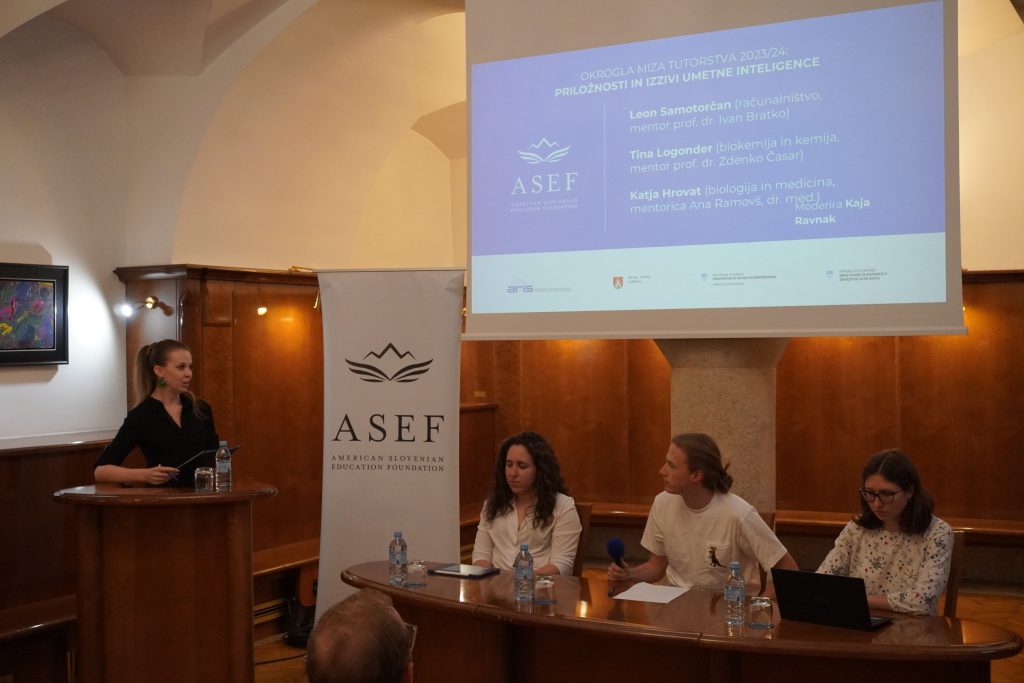
AI AND EXTREME WEATHER PHENOMENA
The roundtable took place in three parts, where the panelists were cross-questioned by the moderator and the audience. In the first round, Leon Samotorčan presented the work of the computer science group, which has been dealing with predicting extreme weather phenomena. In relation to last year’s floods in Slovenia, Leon addressed various questions about predicting river water levels. When asked whether Slovenia had sufficient infrastructure for accurate forecasting of extreme weather phenomena, he explained that we have the appropriate capacity to work with the Aladdin and ARSO systems. The great advantage of the ARSO system is that it predicts the water level per hour, enabling us to deploy varying alarms in due time; for river overflow, flood or more severe water conditions.
Regarding the integration of artificial intelligence (AI) tools, he cited both positive and negative aspects. The former is the growth of data models that makes UI tools more efficient to use. The negative side is the often overlooked time of teaching data models – the panelists emphasized this as the most time-consuming part of the process.
Katja Hrovat also linked the topic of extreme weather phenomena to her field of biology and medicine. Regarding the impact of weather phenomena on health, she emphasized extreme summer temperatures, which have been rising with climate change, heat-related diseases and the special threat faced by vulnerable groups. She emphasized that floods, fires and storms often lead to the contamination of drinking water, and especially when temperatures are high, this can lead to disease outbreaks. Summer droughts also bring a wider range of problems in agriculture and food production, which can even lead to massive malnutrition. The Junior Fellow also cited the decreasing air quality brought about by various weather disasters, as well as the psychological issues which follow experiences of stress and trauma. All of the above leads to an overburdening of the healthcare system – not only during specific unpredictable events such as weather extremes, but also in the long term.
On how AI can help in dealing with such problems, Katja presented examples of the use of AI tools in the development of medicines and the allocation of the suitable medical treatment. AI can also be deployed to help with designing clinical trials, enabling us to prior identify patients who are most likely to respond to certain substances.
AI IN THE PHARMACEUTICAL INDUSTRY
The representative of the biochemistry and chemistry group, Tina Logonder, addressed the extremes in the field of chemistry. She presented the work of her group, which dealt with finding the extreme or optimum for the best thermodynamic folding of a protein. The problem was solved with Google’s AI tool DeepMind.
The use of AI tools is increasing significantly in the pharmaceutical field, and Tina highlighted the issue of lack of transparency. Twenty-five of the world’s largest pharmaceutical companies do not reveal how they use AI, nor what they are developing with the help of AI tools. When asked whether this could be resolved through additional regulatory frameworks, Tina explained that medicine development in the pharmaceutical industry is not a transparent process in itself. Due to competition and patenting purposes, companies do not disclose which drugs they are developing and how, so even with the integration of AI, the panelist does not expect major changes in this area.
AI INFRASTRUCTURE DEVELOPMENT and ETHICAL QUESTIONS
We asked the panelists how they viewed the increased construction of AI infrastructure. Samotorčan described this as positive, as the construction enables a wider application of AI, the development of larger data models and thus more accurate results of AI tools. With the proliferation of various AI aids and their increasing reliability, researchers can reach for AI integration more often. The panelists emphasized how this significantly reduces research costs.
We turned to the audience, who asked questions regarding the environmental impact of AI. One participant pointed out that the computing power required to train AI models has been doubling every 3,4 months since 2012. The development, maintenance and disposal of AI technology thus produces a huge carbon footprint. The participant wondered if AI’s lowering of the research costs outweighs the environmental cost.
The Junior Fellows replied that in any case, stopping the development (and thus the negative environmental impact) of AI is unlikely. Samotorčan emphasized the importance of green energy, while Hrovat and Logonder cited examples where AI tools help reduce the carbon footprint. Although they recognize the extremely negative effects that the infrastructure in question leaves on the environment, they are optimistic that further development of AI might help reduce the carbon footprint through various energy-saving tools. Samotorčan joked that maybe artificial intelligence will solve this problem on its own.

In addition to environmental ethics, the audience also asked questions relating to legal dilemmas in medicine. They referred, for example, to the allocation of suitable drugs or treatment processes, which Katja Hrovat spoke about in the first round. Here, they wondered who would be held legally responsible if an error occurred in the selection of appropriate treatment with the use of AI. Katja explained that currently the involvement of doctors is still so high that AI is only a tool, the outcome of which is assessed by the doctor, and not an autonomously operating entity, which could then be blamed for possible complications. Nevertheless, the field of medicine strives for an increasing application of AI tools to ameliorate various burdens posed on the health system. We can thus expect for AI to take on a greater role in the field of selecting suitable treatment plans. In this case, the Junior Fellow pointed to a legal dilemma, as it is currently unclear whether the legal responsibility would be assumed by the doctor or the person who developed the AI tool in question. The participants expressed their confidence that in the future, the involvement of qualified experts in AI integration processes will remain frequent enough to prevent such dilemmas.
AI IN EVERYDAY LIFE
The final question from the audience addressed how regular people could apply AI in their daily lives (in addition to the already familiar Chat GPT). Katja Hrovat said that AI tools are being developed in medicine to make educating patients easier and more accessible. This would contribute to the patients’ autonomy and through informing them on their own health and possible treatment processes. With the help of AI, patients could more easily understand certain conditions and complex medical processes.
In addition, AI is also being integrated into lifestyle. Katja highlighted everyday devices such as smart refrigerators. Regarding the use of AI in everyday life, Leon Samotorčan commented that most AI innovation will be present in services that ordinary people may not even know about – such as forecasting weather phenomena. The improvements that AI will bring to everyday life will most likely not be visible at all. Unbeknownst to them, humans will enjoy the fruits of this work.
Tina Logonder also suggested alternatives to tools such as Chat GPT, where many users have faced issues with incorrect or hallucinatory citing. She emphasized the usefulness of AI citation tools which are reliable and accessible for use – she herself relies on Perplexity.
The roundtable was successfully concluded with a lively discussion between the audience and the panelists. During the event, we not only learned about the work conducted within the ASEF Tutorial program, but also about the current advantages and disadvantages of AI, as well as the questions, enthusiasm and concerns expressed by the general public. We would like to thank the panelists and all participants for an extremely informative and interesting event.
The program is co-financed by the Government Office for Slovenians Abroad and the Office of the Republic of Slovenia for Youth.


